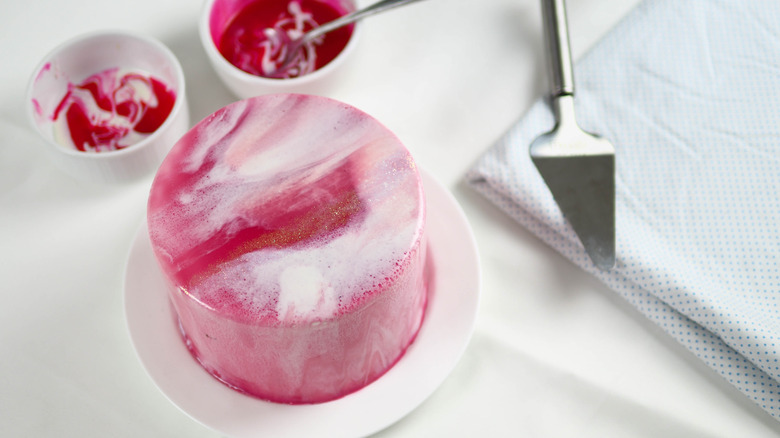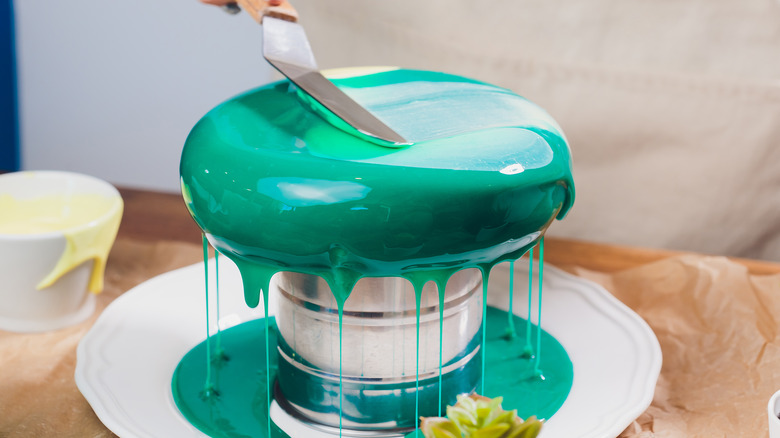Before Pouring Your Mirror Glaze, Make Sure Your Cake Is Frozen
If you're unfamiliar with the term, a mirror cake is a cake that has a reflective glaze made of sweetened condensed milk, chocolate, water, and gelatin that gives the impression of a mirror-like surface. Many are made to have the look of a galaxy (often even decorated with planets and stars), but regardless of the specific decoration, mirror cakes are a guaranteed way to have a visually stunning cake — as long as you glaze it correctly.
One important detail in getting the glaze right? Your cake needs to be frozen solid for it to work correctly. Essentially, you make a cake as normal, then apply a crumb coat (an ultra-thin layer of frosting), and freeze it overnight. Then, take the cake out of the freezer only once you are ready to apply the glaze. The cake needs to be completely frozen so the glaze — which, opposite to the cake, will be warm — sufficiently solidifies atop the cake.
What temperature does the glaze need to be?
The glaze that you prepare needs to be at a warm temperature for it to properly solidify on the cake — this is another important step to get just right, along with the cake being frozen solid. So what temperature do you need to get the glaze to?
For the process to work correctly, most recipes will call for the glaze to be between 90 and 95 degrees Fahrenheit. At this temperature, the glaze will go onto the cake smoothly — meaning there won't be any unwanted drips and it will set into a layer that is about 2 to 3 millimeters thick.
If the glaze is too hot, say about 100 degrees, you risk it melting the cake and leaving you with a messy cake that's falling apart. On the other side of the coin, if the glaze is too cold, anywhere under 85 degrees, it won't spread evenly over the cake.

